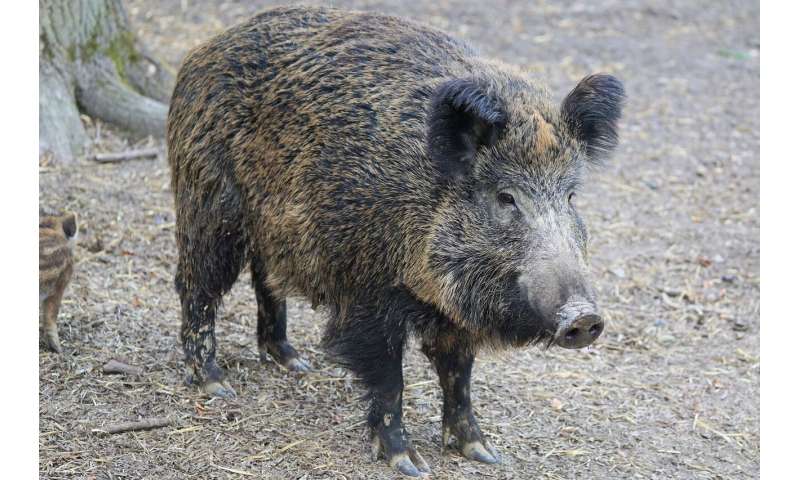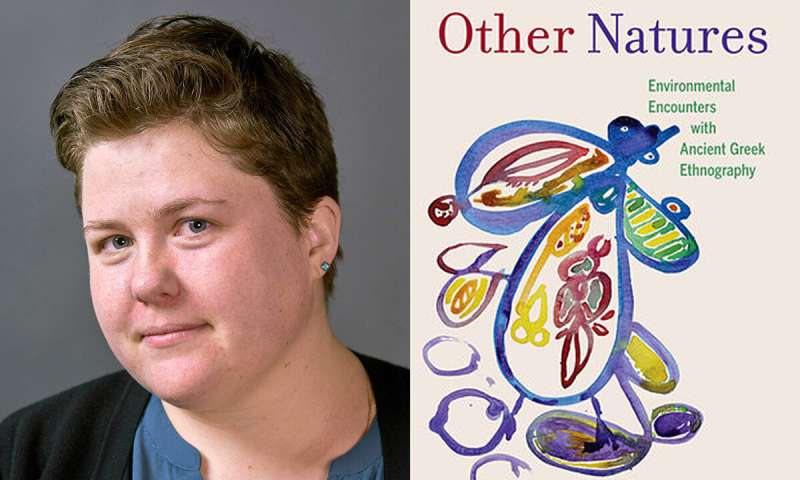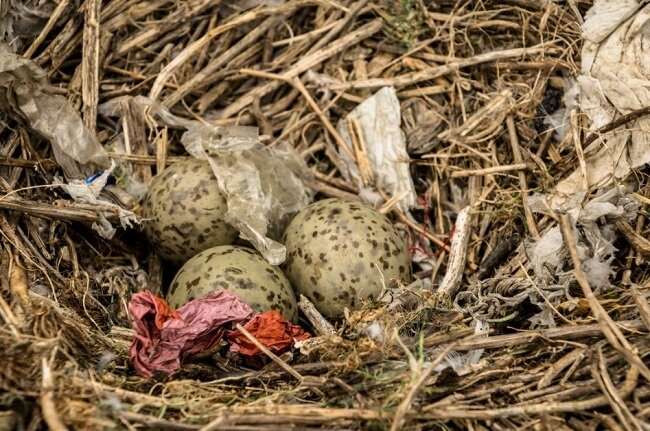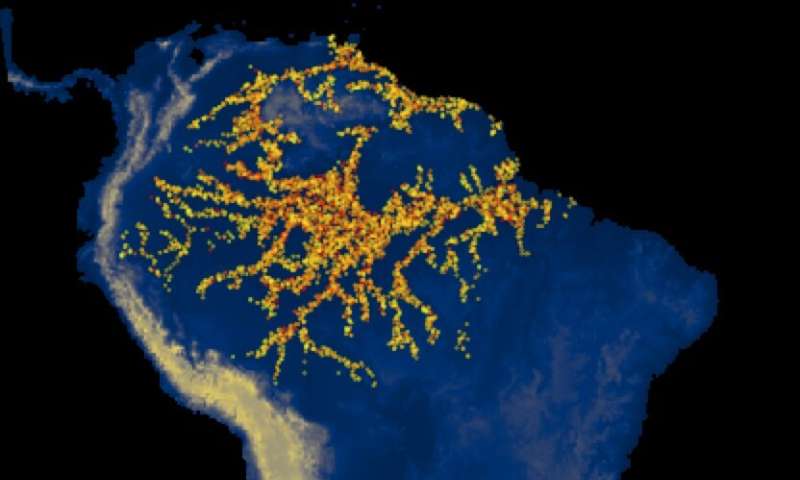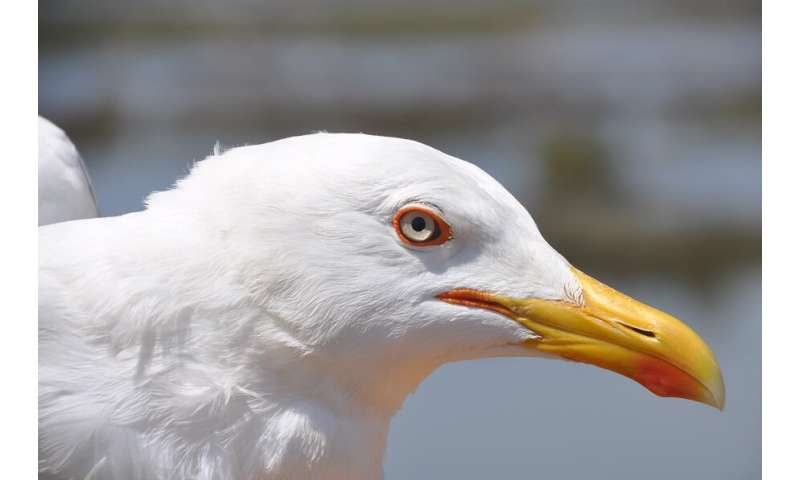by Lauren Miura, University of California, Los Angeles
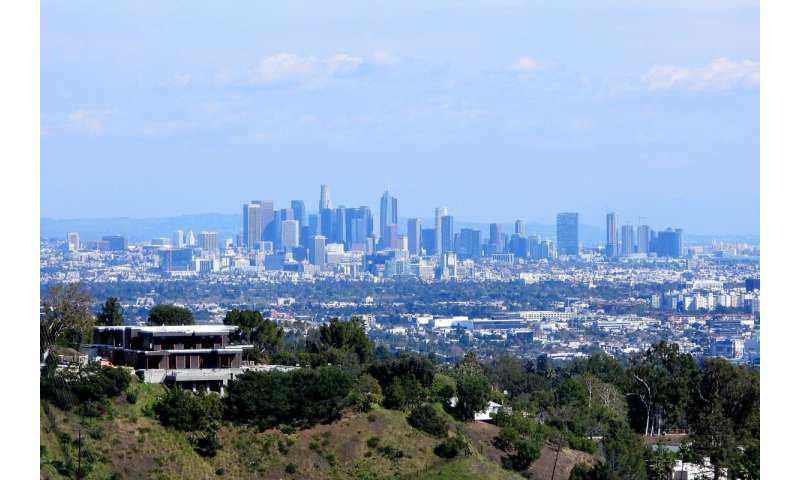
UCLA researchers show how taking bold action on climate change will benefit local residents. Credit: Nurit Katz/UCLA
Since millions of Californians began staying at home and off the roads in March, air quality in the Golden State has visibly improved. Once life returns to normal, however, air pollution levels are likely to return to their prepandemic levels.
A team of UCLA researchers argues this does not have to be our fate.
In a peer-reviewed study published May 4 in the journal Nature Sustainability, they describe a pathway for California to dramatically cut greenhouse gas emissions and air pollution by 2050. Taken together, these actions would prevent about 14,000 premature deaths from air pollution–related illnesses each year, all while helping to reduce climate change, the researchers say.
Air pollution is linked to a host of health problems, including respiratory and cardiovascular diseases, neurological problems, cancers, and adverse pregnancy outcomes. People exposed to elevated levels of air pollution also have a higher chance of getting sick with influenza and are more vulnerable to COVID-19.
"It doesn't need to take a global pandemic to create cleaner air and healthier lives," said Yifang Zhu, one of the study's lead authors and a professor at the UCLA Fielding School of Public Health. "Climate action directly benefits people at a local and regional scale by creating cleaner air. The public health benefits are both immediate and long-term, and we can save the economy billions each year."
To limit the rise in global temperature to 3.6 degrees Fahrenheit (2 degrees Celsius) above preindustrial levels by 2100—the threshold for avoiding the most severe effects of global warming—the United Nations' Intergovernmental Panel on Climate Change warns that human-caused emissions will need to be reduced to nearly zero, and any remaining emissions will need to be captured and stored. This is known as net-zero emissions, or carbon neutrality.
Achieving this globally is no easy feat, but the study shows how it can be done in California—creating the first-ever roadmap for the state to get there by 2050 using existing policies and technologies.
"Nothing we are suggesting is science fiction, but it will take a lot more than what we're doing now," said study co-author Tony Wang, an engineer with the California Air Resources Board who recently received a doctorate in environmental science and engineering from UCLA.
Collaborators from the UCLA Joint Institute for Regional Earth System Science and Engineering contributed state-of-the-art modeling to analyze how ambient air quality would change under a net-zero emissions scenario. Then, the researchers combined the model with epidemiological data and information to estimate the impact of cleaner air on public health.
In addition to the finding that approximately 14,000 premature deaths could be avoided each year in California by 2050, achieving net-zero emissions could also:
Reduce acute respiratory symptoms in 8.4 million adults.
Reduce asthma exacerbation in 1 million children.
Decrease the number of lost work days by 1.4 million.
Decrease cardiovascular hospital admissions by 4,500.
While all communities would benefit, the state's top 25% most-polluted census tracts would receive approximately 35% of the health benefits resulting from the projected improvements in air quality, according to the study.
"We were happy to see that when you cut down on these emissions, you bring disproportionately higher levels of air-quality benefits to disadvantaged communities," Zhu said.
Unlike with the current COVID-19 crisis, achieving net-zero emissions postpandemic would benefit the economy. By 2050, the monetary savings of greenhouse gas reductions will exceed the cost by $109 billion a year, the study found.
The study's authors intend for their research to help state and local policymakers visualize how taking bold action on climate change will directly benefit people.
"Reducing greenhouse gas emissions in our state will not only slow down global climate change, but more importantly, will improve the air quality and protect people's health in our local community," said co-author Bin Zhao, a former UCLA researcher who is now an earth scientist at Pacific Northwest National Laboratory.
Explore further Concrete solutions that lower both emissions and air pollution
Since millions of Californians began staying at home and off the roads in March, air quality in the Golden State has visibly improved. Once life returns to normal, however, air pollution levels are likely to return to their prepandemic levels.
A team of UCLA researchers argues this does not have to be our fate.
In a peer-reviewed study published May 4 in the journal Nature Sustainability, they describe a pathway for California to dramatically cut greenhouse gas emissions and air pollution by 2050. Taken together, these actions would prevent about 14,000 premature deaths from air pollution–related illnesses each year, all while helping to reduce climate change, the researchers say.
Air pollution is linked to a host of health problems, including respiratory and cardiovascular diseases, neurological problems, cancers, and adverse pregnancy outcomes. People exposed to elevated levels of air pollution also have a higher chance of getting sick with influenza and are more vulnerable to COVID-19.
"It doesn't need to take a global pandemic to create cleaner air and healthier lives," said Yifang Zhu, one of the study's lead authors and a professor at the UCLA Fielding School of Public Health. "Climate action directly benefits people at a local and regional scale by creating cleaner air. The public health benefits are both immediate and long-term, and we can save the economy billions each year."
To limit the rise in global temperature to 3.6 degrees Fahrenheit (2 degrees Celsius) above preindustrial levels by 2100—the threshold for avoiding the most severe effects of global warming—the United Nations' Intergovernmental Panel on Climate Change warns that human-caused emissions will need to be reduced to nearly zero, and any remaining emissions will need to be captured and stored. This is known as net-zero emissions, or carbon neutrality.
Achieving this globally is no easy feat, but the study shows how it can be done in California—creating the first-ever roadmap for the state to get there by 2050 using existing policies and technologies.
"Nothing we are suggesting is science fiction, but it will take a lot more than what we're doing now," said study co-author Tony Wang, an engineer with the California Air Resources Board who recently received a doctorate in environmental science and engineering from UCLA.
Collaborators from the UCLA Joint Institute for Regional Earth System Science and Engineering contributed state-of-the-art modeling to analyze how ambient air quality would change under a net-zero emissions scenario. Then, the researchers combined the model with epidemiological data and information to estimate the impact of cleaner air on public health.
In addition to the finding that approximately 14,000 premature deaths could be avoided each year in California by 2050, achieving net-zero emissions could also:
Reduce acute respiratory symptoms in 8.4 million adults.
Reduce asthma exacerbation in 1 million children.
Decrease the number of lost work days by 1.4 million.
Decrease cardiovascular hospital admissions by 4,500.
While all communities would benefit, the state's top 25% most-polluted census tracts would receive approximately 35% of the health benefits resulting from the projected improvements in air quality, according to the study.
"We were happy to see that when you cut down on these emissions, you bring disproportionately higher levels of air-quality benefits to disadvantaged communities," Zhu said.
Unlike with the current COVID-19 crisis, achieving net-zero emissions postpandemic would benefit the economy. By 2050, the monetary savings of greenhouse gas reductions will exceed the cost by $109 billion a year, the study found.
The study's authors intend for their research to help state and local policymakers visualize how taking bold action on climate change will directly benefit people.
"Reducing greenhouse gas emissions in our state will not only slow down global climate change, but more importantly, will improve the air quality and protect people's health in our local community," said co-author Bin Zhao, a former UCLA researcher who is now an earth scientist at Pacific Northwest National Laboratory.
Explore further Concrete solutions that lower both emissions and air pollution
More information: Tianyang Wang et al. Health co-benefits of achieving sustainable net-zero greenhouse gas emissions in California, Nature Sustainability (2020). DOI: 10.1038/s41893-020-0520-y
Journal information: Nature Sustainability
Provided by University of California, Los Angeles
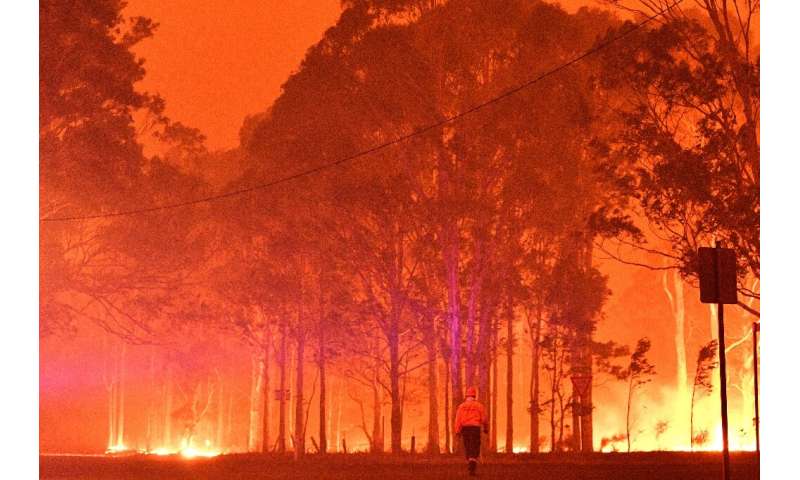 The five last years have been the hottest on record, as was the decade from 2010-2019
The five last years have been the hottest on record, as was the decade from 2010-2019